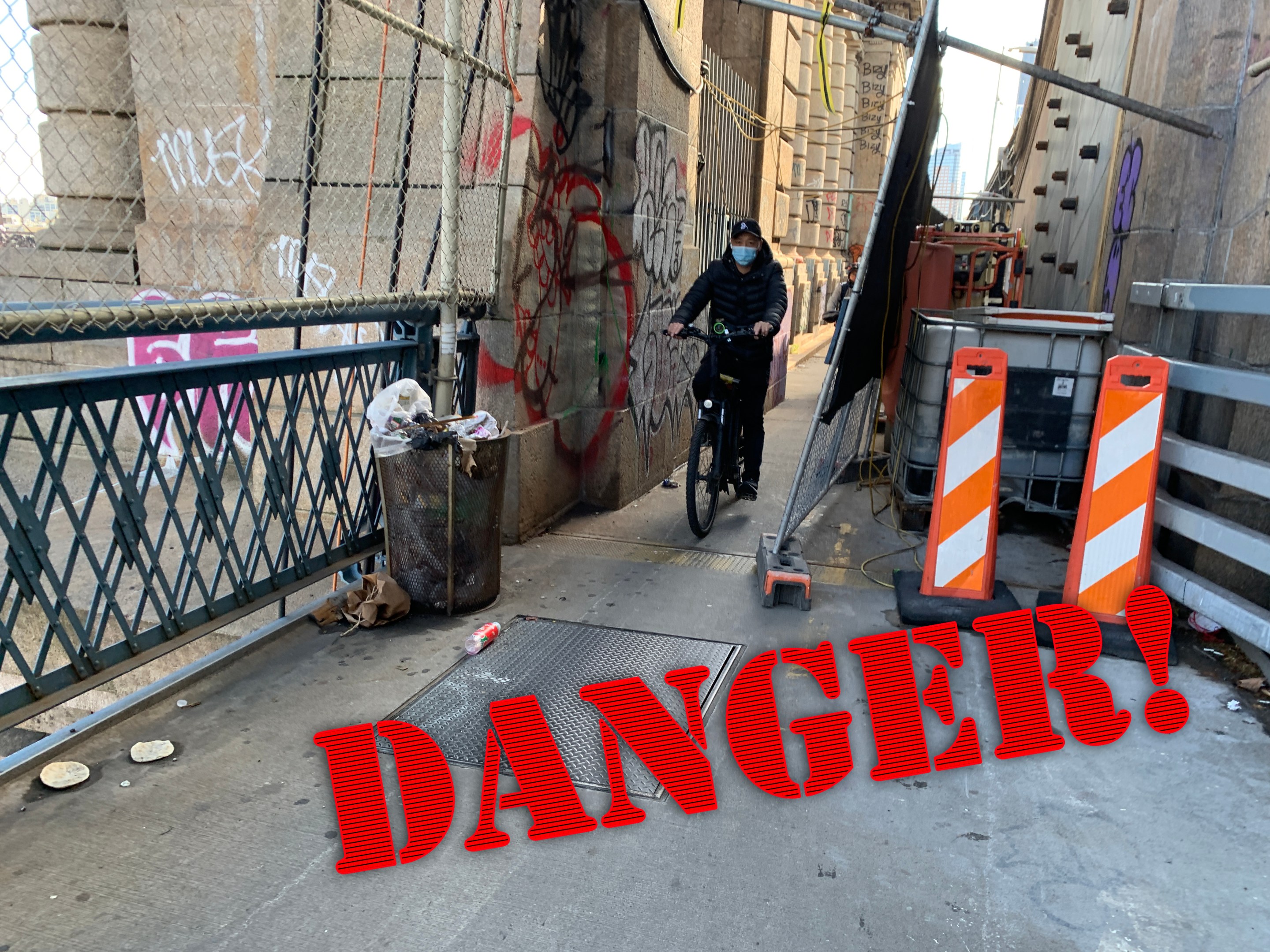The Manhattan Bridge's popular bike path has become a dangerous bottleneck because of construction materials stored there for years — and cyclists are calling on the city to make more room on the span.
Workers have staged the equipment and Portosans behind chainlink fences at several spots on the bridge's bike path and pedestrian walkway on the far side of the bridge, taking up so much space that it can no longer accommodate cyclists in both directions. Two of the pinch points are on inclines, which creates more of a danger for thousands of people each day.

The problem will become exacerbated on future Friday nights, when the Department of Transportation will need to close the nearby Brooklyn Bridge bike lane for renovations and advising cyclists to use the Manhattan Bridge instead. (Those repairs were set for tonight, but have been put off because of the weather.)
Last month, 149,474 people crossed the bike path, or about 4,822 each day, according to DOT's bike counts.
The work is part of what DOT described as critical maintenance and rehabilitation of the bridge, which also involves closing some of its seven vehicle lanes at times, according to spokesman Scott Gastel, who added that the work zones are not allowed to exceed 50 feet.
The project has been going on since November 2018 and was originally scheduled to wrap in September 2021, restoring and replacing parts around the 1909 span's roadways, subway tracks, and pedestrian and bike paths; the sheds have been in place throughout the contract, according to Gastel.
Gastel didn't say how long the equipment would remain.
Beyond that, the agency is apparently fine with the sketchy setups. Adding insult to injury, officials apparently told cycling advocates with Transportation Alternatives's Bridges For People campaign last month that they would ask contractors to set up more signs telling bikers to dismount near the construction gear.
Update - We spoke to @NYC_DOT rep. After reviewing our photos, they determined the construction crew is adhering to DOT's signage rules. The only safety improvement DOT offered is more signage to ask cyclists to dismount bikes near sheds.
— bridges4people (@bridges4people) October 15, 2022
This is not how we achieve vision zero. https://t.co/7cHYtmqUC4
But that's not good enough, said one volunteer cycling advocate with TA's bridges campaign, who commutes by bike over the Manhattan and Brooklyn spans daily.
"You can give people a break for a little construction, but this is obsessive," said David Warren.
The sites have workers guiding bike traffic during construction hours, according to Gastel, but Warren noted that it's still dangerous to leave it up cyclists to maneuver the bottlenecks when no one's posted there.
"Now there’s nobody there, so it’s like a no man’s land," he said.
The Manhattanite has seen close calls at the sheds that partially block views of oncoming bike traffic, but he said that cyclists watching out for each other has luckily kept crashes at bay so far.
"One person on a motorbike who doesn’t see a cyclists and then it’s a crash and then it’s a fatality," Warren said.






